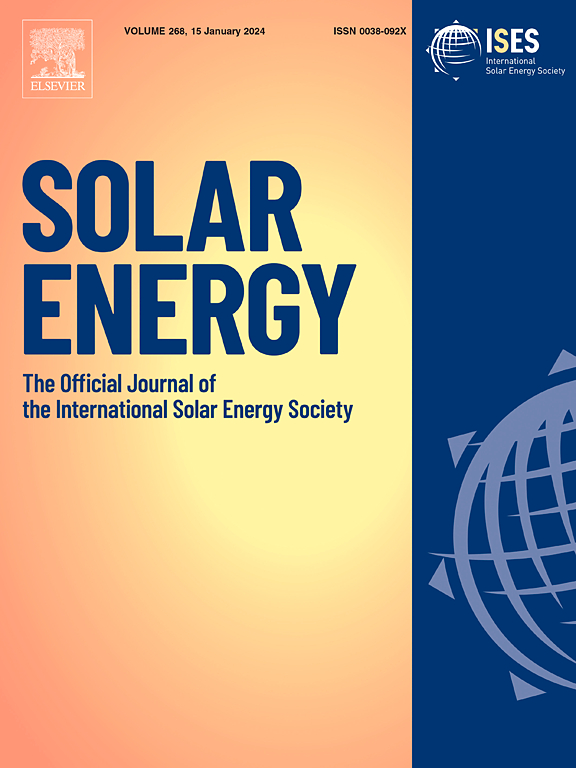温室光热系统能量参数预测的人工智能方法
IF 6
2区 工程技术
Q2 ENERGY & FUELS
引用次数: 0
摘要
各个农业部门,特别是温室设施的能源需求不断增加,需要探索可行的解决方案。利用可再生能源,以及实施人工智能(AI)来预测和分析能源消耗数据,为解决这一挑战提供了一个有希望的方法。在本研究中,使用各种机器学习模型来预测温室环境内外基于纳米流体(Al2O3, SiO2, Al2O3-SiO2)的光伏热系统的能量参数(如输出功率,电效率,热效率和总效率)。建模使用时滞神经网络(TDNN)、多层感知器(MLP)和非线性自回归(NARX)方法,并结合对数激活函数。对不同能量参数的建模结果表明,NARX网络的预测准确率最高,平均统计指标R2 = 0.9979, RMSE = 0.1062。MLP网络的准确率最低,平均统计指标R2 = - 0.1657, RMSE = 3.4482。对比能量参数建模结果可知,温室外模拟的统计指标优于温室内模拟,平均R2 = 0.7038, RMSE = 0.9358,平均R2 = 0.5162, RMSE = 1.5267。此外,对不同网络的收敛时间分析表明,MLP、TDNN和NARX网络的平均收敛时间分别为0.4057 h、37.3864 h和103.5006 h。本文章由计算机程序翻译,如有差异,请以英文原文为准。
An artificial intelligence approach to predict energy parameters in a photovoltaic-thermal system within a greenhouse
The ever-increasing energy demands in various agricultural sectors, especially in greenhouse facilities, require exploring feasible solutions. Utilizing renewable energy sources, along with implementing artificial intelligence (AI) to predict and analyze energy consumption data, offers a promising approach to tackle this challenge. In this research, various machine learning models are used to predict energy parameters (such as output power, electrical efficiency, thermal efficiency, and total efficiency) of a photovoltaic-thermal system based on nanofluids (Al2O3, SiO2, Al2O3-SiO2) both inside and outside a greenhouse environment. The modeling is carried out using time-delay neural networks (TDNN), multilayer perceptron (MLP), and nonlinear autoregression (NARX) methods, incorporating a logarithmic activation function. The results of the modeling for predicting different energy parameters indicate that the NARX network achieves the highest accuracy, with average statistical indicators of R2 = 0.9979 and RMSE = 0.1062. In contrast, the MLP network shows the lowest accuracy, with average statistical indicators of R2 = −0.1657 and RMSE = 3.4482. Furthermore, a comparison of the energy parameter modeling results shows that simulations conducted outside the greenhouse have better statistical indicators, with an average R2 = 0.7038 and RMSE = 0.9358, compared to simulations conducted inside the greenhouse, which yielded an average R2 = 0.5162 and RMSE = 1.5267. Additionally, an analysis of the convergence times for the different networks reveals that the MLP, TDNN, and NARX networks require average times of 0.4057 h, 37.3864 h, and 103.5006 h, respectively.
求助全文
通过发布文献求助,成功后即可免费获取论文全文。
去求助
来源期刊

Solar Energy
工程技术-能源与燃料
CiteScore
13.90
自引率
9.00%
发文量
0
审稿时长
47 days
期刊介绍:
Solar Energy welcomes manuscripts presenting information not previously published in journals on any aspect of solar energy research, development, application, measurement or policy. The term "solar energy" in this context includes the indirect uses such as wind energy and biomass
 求助内容:
求助内容: 应助结果提醒方式:
应助结果提醒方式:


